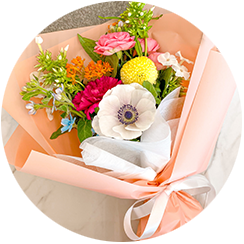Orchid Care Essentials for Blooming Success
Posted on 24/05/2025
Orchid Care Essentials for Blooming Success
Orchids are one of the most beloved and captivating houseplants, cherished for their exotic beauty and stunning blooms. However, achieving blooming success with orchids can seem daunting even for experienced plant owners. With the right knowledge and techniques, anyone can enjoy the rewarding sight of vibrant, healthy flowers. This comprehensive guide will introduce you to the essentials of orchid care, offering practical tips and expert advice to help your orchids thrive and bloom.

Understanding Your Orchid: Types and Characteristics
Before exploring orchid care tips, it's vital to know what type of orchid you own. There are over 25,000 naturally occurring orchid species and more than 100,000 hybrids, but a handful of genera are most common as houseplants:
- Phalaenopsis (Moth Orchid): Known for long-lasting blooms and beginner-friendly care.
- Cattleya: Famous for large, fragrant flowers and vivid colors.
- Dendrobium: Diverse appearances and long flower spikes.
- Oncidium (Dancing Lady): Delicate blooms with abundant sprays of flowers.
- Vanda: Appreciated for striking, vibrant blossoms.
Always identify your orchid variety since understanding its natural growing environment will help you adapt your orchid care routines for blooming success.
Light: The First Step to Healthy Orchid Blooms
How Much Light Do Orchids Need?
Proper light is critical in encouraging orchid blooms. Most cultivated orchids require bright, indirect sunlight. Here's how to ensure successful lighting:
- Phalaenopsis: Thrives in east- or west-facing windows. Too much direct sunlight can scorch its leaves.
- Cattleya and Vanda: These can tolerate more sunlight, but still avoid intense midday rays.
Recognizing Light Problems
- Too Little Light: Leaves appear dark green, blooms are sparse or absent.
- Too Much Light: Leaves turn yellow or develop brown dry spots.
Tip: A sheer curtain can diffuse intense sunlight, or use artificial grow lights in rooms with limited natural light.
Watering Your Orchid: Finding the Right Balance
How Often Should You Water Orchids?
Overwatering is the leading cause of failing orchids. The right frequency depends on the type of orchid, its potting medium, and environment:
- Check the roots: Healthy orchid roots are firm and green or white. If they look brown and mushy, there may be rot from overwatering.
- Allow the potting mix to dry: Most orchids prefer to almost dry out between waterings. Insert a finger an inch into the medium; if it feels dry, it's time to water.
- General rule: Water once a week for most household orchids, but always adjust for your specific conditions.
Never let your orchid sit in water--ensure the pot has ample drainage holes!
Humidity and Airflow: Creating the Optimal Orchid Environment
Orchids are native to humid, tropical regions and need consistently moist air. Indoor environments can be dry, especially during winter heating.
How to Increase Humidity for Orchids
- Place your orchid on a humidity tray filled with water and pebbles.
- Mist the orchid leaves (avoid misting flowers), especially in dry climates.
- Group orchids or other plants to create a microclimate.
- Use a room humidifier for larger collections.
Airflow is Important
Good airflow prevents fungal diseases and helps roots breathe. Use a gentle fan in the room, but don't direct cold or strong air currents onto your plants.
Temperature: Best Range for Orchids to Bloom
Temperature plays a vital role in triggering orchid blooms. Most orchids prefer daytime temperatures between 65-80?F (18-27?C) and slightly cooler nights (55-65?F / 13-18?C). Many species need this day-night temperature drop--called the thermal difference--to encourage flowering cycles.
Tips for Orchid Temperature Control
- Keep orchids away from cold drafts and heating vents.
- Open windows occasionally to let in fresh air, provided the temperatures are within their acceptable range.
- Forcing a slight nighttime drop in temperature can trigger blooms in reluctant orchids, particularly Phalaenopsis.
Orchids and Fertilizer: Feeding for Flowers
Orchids need nutrients, but less than many other houseplants. Use a balanced orchid fertilizer (20-20-20 or similar) diluted by half, every 2-4 weeks during active growth.
How to Fertilize Orchids
- "Weakly, weekly": Use a diluted fertilizer (half-strength) every week or so.
- Flush pots monthly with plain water to prevent salt buildup that can damage roots.
- Reduce or stop fertilizing during winter dormancy, when the plant's growth slows.
Special Flower Boost for Orchids
- Switch to a "bloom booster" fertilizer (with higher phosphorus, such as 10-30-20) as flower spikes begin to form.
Over-fertilization is more dangerous than under-feeding. When in doubt, use less fertilizer.
Repotting Orchids: When and How to Do It
Orchids aren't like most houseplants; they outgrow their media (not their pots) every 1-3 years. Repotting keeps roots aerated and prevents disease.
Signs Your Orchid Needs Repotting
- The potting mix is breaking down into small particles.
- Roots are growing out of the pot or look overcrowded.
- Mold or a foul smell from the potting medium.
How to Repot an Orchid
- Gently remove the orchid from its pot and shake off old potting mix.
- Trim any dead, mushy, or brown roots with sterile scissors.
- Place in a slightly larger pot with fresh orchid mix (bark, sphagnum moss, or coconut husk).
- Water lightly to settle roots but avoid soaking.
Repot only after the orchid finishes blooming to avoid stressing the plant.
Orchid Pests and Problems: Prevention and Solutions
Like any plant, orchids can suffer from pests and diseases. Early detection is the key to saving your plant and its future blooms.
Common Orchid Pests
- Aphids, mealybugs, and scale: Small insects that cluster on leaves and stems, feeding on sap.
- Spider mites: Tiny, web-producing pests typically on leaf undersides.
- Fungal and bacterial infections: Black or mushy spots, particularly if humidity and ventilation are poor.
Treatment and Prevention
- Wipe leaves with a damp cloth and inspect regularly.
- Use insecticidal soap or neem oil to control infestations.
- Remove severely affected leaves or blooms promptly.
- Isolate new or infected plants to prevent spread.
Encouraging Orchids to Rebloom: Expert Techniques
Getting an orchid to rebloom is the crowning achievement for many growers. Here's how to set your orchid up for multiple flowering cycles:
- Ensure adequate light, humidity, and temperature drop at night--especially 4-6 weeks after the last bloom.
- Cut the flower spike just above a healthy node after blooms fall (Phalaenopsis may send out a new spike from a node).
- Continue regular feeding with a bloom-boosting fertilizer.
- Be patient! Some species need months of rest between bloom cycles.

Frequently Asked Questions About Orchid Care
Why are my orchid leaves turning yellow?
Yellow leaves can be a sign of overwatering, too much direct sunlight, or natural aging. Always assess root health and adjust care routines.
How do I get my orchid to flower again?
Maintain optimal light, feeding, humidity, and temperature drops at night. Trim old spikes and allow for a resting period.
Should I use ice cubes to water orchids?
While popular, watering with ice cubes can shock roots and lead to problems. Instead, use room temperature water and thoroughly soak the potting media.
Can orchids grow in regular soil?
No. Never use potting soil for orchids. Use a specialized orchid mix to mimic their natural air roots and prevent root rot.
Conclusion: Achieve Blooming Success With Your Orchids
Becoming an expert in orchid care essentials is a journey. Remember the basics--proper lighting, regular watering without overdoing it, good humidity and airflow, temperature management, mindful feeding, and timely repotting--for reliable health and blooms. Observe your orchids closely and be patient: with a little practice and the right care, you'll be rewarded with beautiful, long-lasting flowers year after year.
Start applying these orchid care essentials today and enjoy a lush, blooming orchid collection in your home!
- Orchid plant care tips
- How to make orchids bloom
- Indoor orchid care for flowering
- Best tips for blooming orchids







